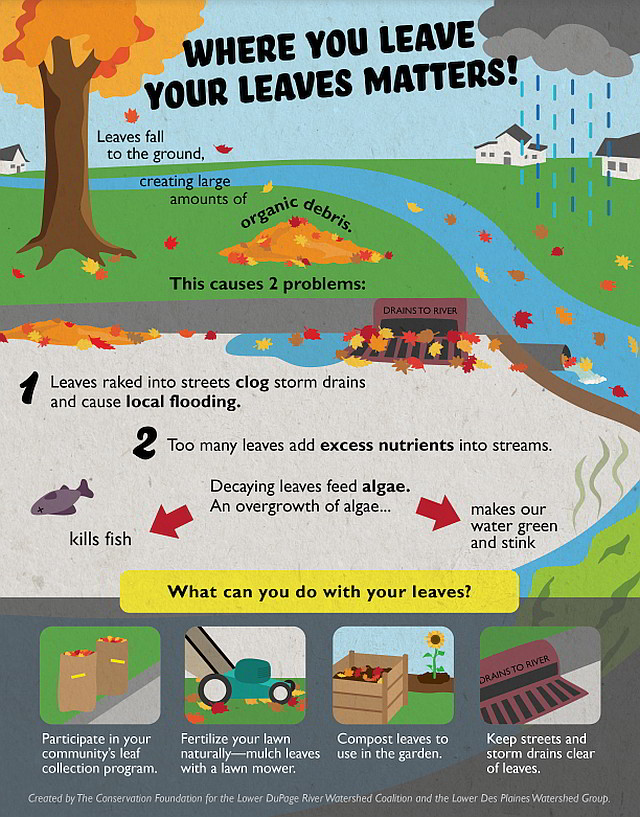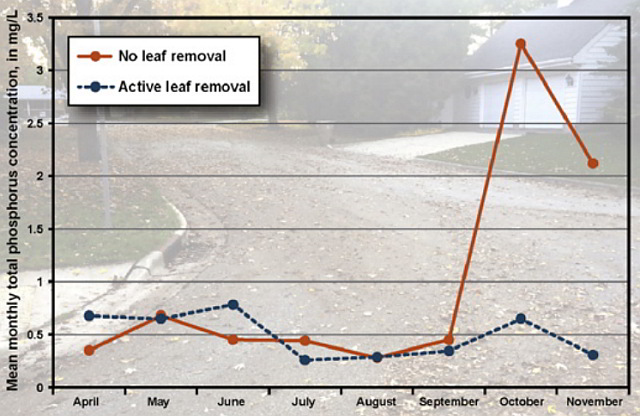IRLNews:2021/01/23/Time to Rake the Leaves: Difference between revisions
mNo edit summary |
mNo edit summary |
||
| Line 12: | Line 12: | ||
Tens of millions have been spent to clear decomposing debris from Eau Gallie River, Turkey Creek, Crane Creek and Grand Canal alone. While effective at immediately improving water quality, muck dredging is a retroactive and repetitive band-aid that doesn't cure the cause. | Tens of millions have been spent to clear decomposing debris from Eau Gallie River, Turkey Creek, Crane Creek and Grand Canal alone. While effective at immediately improving water quality, muck dredging is a retroactive and repetitive band-aid that doesn't cure the cause. | ||
Local environmental leaders have made great strides with the installation of baffle boxes and stormwater traps that capture debris before it enters the water. These expensive high tech devices effectively filter stormwater, but we can't possibly install them on every stormwater pipe draining into the IRL. | |||
It is up to each individual property owner to reduce their impact on the lagoon. Let's all take advantage of the beautiful weather | It is up to each individual property owner to reduce their impact on the lagoon. Let's all take advantage of the beautiful Florida weather and rake our leaves before they end up in the water. In February, IRL = I Rake Leaves. | ||
'''What You Can Do?''' | '''What You Can Do?''' | ||
| Line 28: | Line 28: | ||
'''All the leaves have fallen...''' | '''All the leaves have fallen...''' | ||
Results from a 2016 | Results from a 2016 US Geological Survey study confirm that leaf litter can be a primary source of nutrients in stormwater, particularly phosphorus. When an active, thorough leaf removal and street cleaning program is in place, total and dissolved phosphorus loads were reduced by 84 and 83 percent, respectively, and total and dissolved nitrogen loads were reduced by 74 and 71 percent, respectively compared to no leaf removal and street cleaning program. The timing of leaf removal is important because of the highly leachable nature of leaves, and significant reductions in loads of the total and dissolved forms of phosphorus and nitrogen can be achieved with removal of leaf litter prior to a precipitation event.(Selbig 2016)[https://www.usgs.gov/centers/umid-water/science/using-leaf-collection-and-street-cleaning-reduce-nutrients-urban] | ||
<div style="width:100%;float:left;margin-top:10px;margin-bottom:20px"> | <div style="width:100%;float:left;margin-top:10px;margin-bottom:20px"> | ||
[[File:Leaf_Chart.jpg|640px|frameless|center| | [[File:Leaf_Chart.jpg|640px|frameless|center|Leaf Removal Chart|link=https://www.usgs.gov/centers/umid-water/science/using-leaf-collection-and-street-cleaning-reduce-nutrients-urban]] | ||
</div> | </div> | ||
Now is the time for community leaders to run an awareness campaign aimed at keeping leaf debris out of the IRL. Let's use our resources to encourage waterway adjacent communities to mulch, compost, or bag their leaves for proper disposal. Maybe park a yard waste dumpster or two for IRL neighborhoods to use during the cleanup. | Now is the time for community leaders to run an awareness campaign aimed at keeping leaf debris out of the IRL. Let's use our resources to encourage waterway adjacent communities to mulch, compost, or bag their leaves for proper disposal. Maybe park a yard waste dumpster or two for IRL neighborhoods to use during the cleanup. | ||
Revision as of 10:38, January 23, 2021
Tens of millions have been spent to clear decomposing debris from Eau Gallie River, Turkey Creek, Crane Creek and Grand Canal alone. While effective at immediately improving water quality, muck dredging is a retroactive and repetitive band-aid that doesn't cure the cause.
Local environmental leaders have made great strides with the installation of baffle boxes and stormwater traps that capture debris before it enters the water. These expensive high tech devices effectively filter stormwater, but we can't possibly install them on every stormwater pipe draining into the IRL.
It is up to each individual property owner to reduce their impact on the lagoon. Let's all take advantage of the beautiful Florida weather and rake our leaves before they end up in the water. In February, IRL = I Rake Leaves.
What You Can Do?
- Avoid blowing or raking leaves into the street, ditches, waterways or storm drains. Keep all fallen leaves and grass clippings on your property and blow or rake leaves into a pile and then clean them up.
- Set your lawn mower to mulch and mow high. Taller grass retains moisture and catches grass clippings. Mow often enough that grass clippings are shorter than the remaining lawn and can be trapped on your lawn.
- Compost leaves away from storm drains, canals and tributaries. Contain your compost to keep nutrient-rich water from leaching into the storm system.
- Bag your leaves and put them out on yard trash day.
- If you use a lawn service, please make sure they responsibly dispose of leaves and yard debris.
All the leaves have fallen...
Results from a 2016 US Geological Survey study confirm that leaf litter can be a primary source of nutrients in stormwater, particularly phosphorus. When an active, thorough leaf removal and street cleaning program is in place, total and dissolved phosphorus loads were reduced by 84 and 83 percent, respectively, and total and dissolved nitrogen loads were reduced by 74 and 71 percent, respectively compared to no leaf removal and street cleaning program. The timing of leaf removal is important because of the highly leachable nature of leaves, and significant reductions in loads of the total and dissolved forms of phosphorus and nitrogen can be achieved with removal of leaf litter prior to a precipitation event.(Selbig 2016)[1]
Now is the time for community leaders to run an awareness campaign aimed at keeping leaf debris out of the IRL. Let's use our resources to encourage waterway adjacent communities to mulch, compost, or bag their leaves for proper disposal. Maybe park a yard waste dumpster or two for IRL neighborhoods to use during the cleanup.
Now is also the time for our municipalities to sweep every leaf covered street that sends stormwater to the lagoon. During the dry season our streets become covered with not only natural debris, but also automotive fluids, brake and tire dust, litter, micro-plastics, and pet excrement. Encourage your community leaders and public works departments to be proactive, and clean every street that drains to the lagoon, BEFORE the spring rains can wash the debris into the water.
Temporarily redirecting street sweepers to concentrate on lagoon adjacent communities won't cost much more than fuel. And it would prevent tons of muck-making debris from entering IRL tributaries and canals. A savvy municipality might even publicize their "IRL Street Sweep" campaign to demonstrate how environmentally conscious they are.


